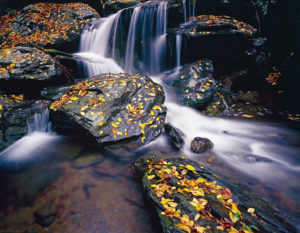Rainfall aplenty has made for lots of tree leaves that will be flying around before we know it. That same abundant rainfall, along with hot weather until a couple weeks ago, has kept the foliage verdant and green. But, color is coming to a yard or woodsy area near you. And cool weather, so long as there isn’t a hard freeze for a few more days and weeks, will give some gorgeous views for the leaf peepers. A hard freeze will cut it short, but absent that, a late fall can be a gorgeous fall filled with color galore.
Some of us see a glorious tree with awesome color, and immediately want one like it. If that is you, then some observations by a landscaper and farmer and beekeeper for much of the past half century should be useful, I hope.

Red maples are everywhere, having been planted by builders and homeowners alike in almost every yard along most city streets and public shopping areas. Sizes, shapes, colors have been selected over the years resulting in many identical clones of patented cultivars, or your still can transplant a seedling tree. What some ask are questions such as “why doesn’t my tree look like the one up on Main Street in town” or “how come those I saw driving in the mountains look so much prettier than mine”? There are far too many variables to give a one paragraph statement that answers those questions. Let’s just say, a few degrees difference in temperature, a little more fertility in the soil, can be part of the answer. Also, fast growing trees in a yard that has good soil (a rare thing with new housing construction), will not color up as nicely as one that is mature or growing slower, even if the two trees are identical varieties.
For sparkling color, what else might you choose besides a red maple? Sweet gun, black gum, sourwood, Japanese maples, and sumac come to mind if you want gorgeous red colors. Itea (sweetspire), oakleaf hydrangeas, and nandina give nice red color in a flowering shrub. For orange, there is sugar maple, sassafrass, fothergilla, red foliaged crab apples, and pistache tree. Crape Myrtle can be lovely some years.
It’s hard to improve on the yellow fall color of a ginkgo tree. Perhaps a shagbark hickory would give a gold just as nice. Some years tulip poplar trees have good lemon yellow color in the fall, but frequently they turn brown or blow away instead. Sweet birch produce a nice gold in fall, too. (They are called sweet birch because their sap is high in sugar content, like a sugar maple.)
Other plants that often color nicely include blueberries, katsura tree, cypress, dawn redwood, larch or tamarack, scarlet oak, chestnut oak, Oriental persimmon, and kousa dogwoods. Some seasons white oak, Bradford pears and sweet gum turn nice shades of purple or burgundy. Serviceberry, redbud, smoke tree sometimes are impressive.
Having evergreen trees in the background of colorful trees is part of what makes for a lovely view. This is often why the views along the tops of hills and mountains of Appalachia are so photogenic. The same could be said for other mountains, so long as they aren’t so tall that little grows near their tops.
Observation of what works well in the yards of other homes in your area can be the inspiration to come up with a plan for dressing up the eye appeal of your own yard, this fall or anytime. Even if you have a lovely yard, or you don’t even have a yard, I know a leisurely walk or drive to admire fall foliage is apt to be something you’d enjoy. And if your place needs some help, may you be inspired to work on improving the look between now and next fall.